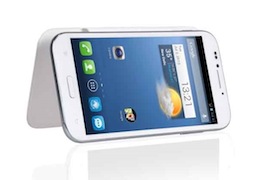Shipment of smartphones in Africa fell 5.2% to 23.1 million units in the second quarter of 2016, according to the latest figures from International Data Corporation (IDC).
These figures, presented in IDC’s recently published ‘Worldwide Mobile Phone Tracker’, indicate that the boom in smartphone sales in Africa is slowing, despite the fact that overall mobile handset shipments were up slightly in Q2 2016, with shipments of basic feature phones rising 31.9% year on year to total 29.8 million units.
South Africa and the North African countries of Morocco, Algeria, and Tunisia remain the most developed handset markets on the continent. The northern trio showed continuing strong growth in the smartphone space, with Long-Term Evolution (LTE) handsets accounting for three-quarters of smartphones sold in the region.
“The launch of 4G is giving a boost to the mobile business in North Africa, and telecom operators have made huge investments in new LTE networks,” says Nabila Popal, Research Manager for Mobile Phones at IDC Middle East, Africa, and Turkey.
“As a result of these investments, 4G services are now being offered at affordable prices to a growing band of customers.”
In South Africa, the most striking change was the continued growth of the low-price smartphone segment, with devices priced below $100 (retail price less VAT) now accounting for more than two-thirds of the country’s Android sales. This space has evolved after top-end sales became well established in the market courtesy of the country’s substantial postpaid segment, which is a rare feature of the operator environment in Africa.
In Nigeria, the continent’s most populous country and biggest handset market, there was a sharp slowdown in growth in Q2 2016, with total smartphone shipment down 6.8% year on year. Sales of 4G phones in Egypt, Africa’s second-largest mobile phone market, surged in anticipation of the impending launch of LTE networks. Such phones accounted for almost twice as many shipments as 3G devices during the quarter.
However, in the extremely price-conscious markets of Sub-Saharan Africa (excluding South Africa), 3G phones remain the predominant choice. Transsion’s principal brands – Tecno, Infinix, and itel – continue to perform very well in this region, dominating feature phone sales while collectively accounting for the second biggest share of the Sub-Sharan Africa smartphone market behind Samsung.
IDC believes that the smartphone market will continue to grow in Africa, particularly after the current commodities slump eases. However, sales are unlikely to reach the rates seen a year or two ago now that many urban markets are becoming saturated.
Overall mobile shipments in Africa will top 200 million units in 2016, equating to year-on-year growth of 7.0%, with smartphones accounting for a marginally higher share of the market than was the case in 2015.
“Outside the cities, network connectivity is often basic, data speeds are much lower, and rural disposable incomes are often very low,” says Simon Baker, Senior Program Manager for Mobile Phones at IDC CEMA.
“As a result, feature phone sales are proving to be resilient across Africa, and this will continue to be the case going forward. Despite downturns in many economies, Africa retains significant long-term growth potential when compared with other developing regions, particularly as smartphone penetration across the continent remains relatively low.”
